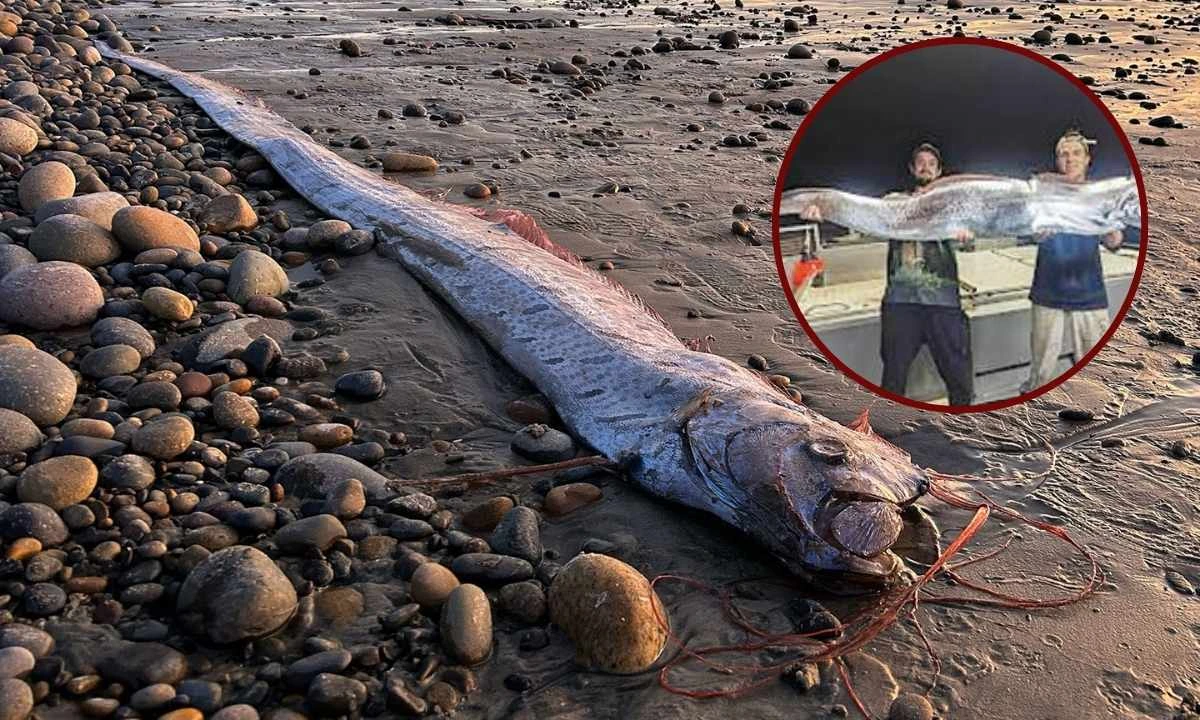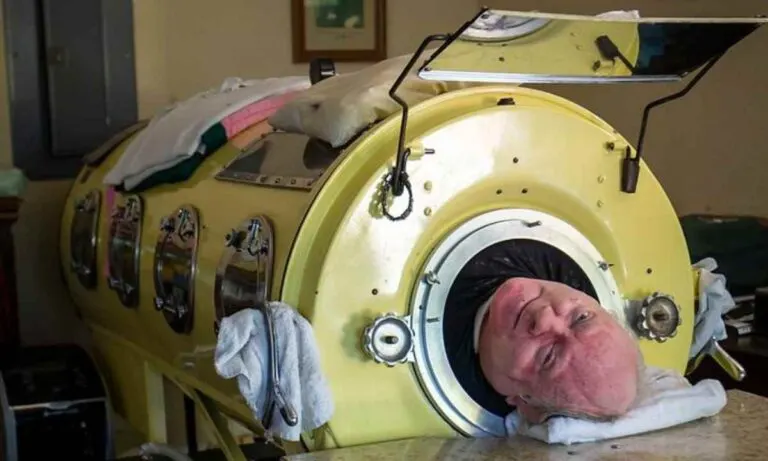A Rare “Doomsday Fish” Returns To The California Shores For The Third Time This Year!
The mysterious deep-water oarfish, often called the “doomsday fish,” has captured the fascination of cultures worldwide with its rare appearances and connection with earthquakes. This year, California witnessed an unusual phenomenon—three separate sightings of the oarfish. The fish is a species that typically dwells deep in the mesopelagic zone. The mesopelagic zone is nearly 3,000 feet below the ocean’s surface. These sightings not only sparked curiosity among scientists but also reignited myths about its link to natural disasters. Let’s dive into the details of this rare occurrence.
The Rare Return of the Doomsday Fish to California
The latest oarfish sighting occurred on November 6, when a 9-foot-long specimen was found on the shores of Grandview Beach in Encinitas, California. The discovery was made by Alison Laferriere, a researcher at the Scripps Institution of Oceanography. The deceased oarfish was quickly transported to the National Oceanic and Atmospheric Administration (NOAA) Fisheries Service before being preserved for further study at the Scripps Marine Vertebrate Collection.
“We took samples and froze the specimen awaiting further study and final preservation in the Marine Vertebrate Collection.”
Ben Frable, manager of the collection.

This marks the third oarfish sighting in California this year. It is extremely rare considering that only 22 sightings have been recorded in the past century. Earlier in August, a 12-foot-long oarfish was discovered near La Jolla Cove, spotted by kayakers and snorkelers. It was found in good condition and is now part of Scripps’ extensive collection. A third specimen, though significantly degraded, washed ashore at Huntington Beach in September.
Frable noted that the reason behind these strandings remains unclear. However, environmental factors like red tides and strong Santa Ana winds could play a role. “Many variables could lead to these strandings,” he explained.
Oarfish Biology: Deep-Sea Enigma
The oarfish is one of the most remarkable creatures of the ocean. Its long, ribbon-like silvery body can grow up to 30 feet, making it the longest-known bony fish. Often described as “sea serpents,” their eerie appearance has contributed to their association with myths.
These deep-sea dwellers thrive in the mesopelagic zone, a poorly understood ecosystem that lies far below the ocean’s surface. Rarely observed alive, oarfish typically only surface when they are in distress, which makes each sighting a rare opportunity for research.
“This oarfish presents a rare opportunity to obtain fresh samples for genomic analysis, allowing us to study the evolutionary adaptations that enable this species to thrive in deep-sea environments,” said Dahiana Arcila, marine biologist and curator at Scripps.
By studying oarfish, scientists hope to gain insights into their anatomy, genomics, and survival strategies.
The Mythology of the ‘Doomsday Fish’
Japanese mythology refers to the oarfish as “ryugu no tsukai,” or the “messenger from the sea dragon god’s palace.” Legends claim that these creatures rise to the surface to warn of impending earthquakes or tsunamis. This belief gained significant traction in 2011 when at least 20 oarfish were reported along Japan’s coastline. This happened months before the devastating earthquake and tsunami.
While these tales are compelling, scientific studies suggest there is no direct link between oarfish sightings and seismic activity. A 2019 study by GeoScience found no correlation between the two. Even so, the myth persists, with some pointing to a 2024 sighting of an oarfish in California just two days before an earthquake hit the region as evidence. Scientists, however, attribute this to coincidence.
Theories Behind Oarfish Strandings
Despite their mysterious appearances, scientists have proposed several theories to explain why oarfish occasionally wash ashore.
One theory suggests that tectonic movements disrupt the deep-sea habitats of oarfish, causing them to surface. Other factors, such as red tides, changes in ocean temperatures, and strong winds like California’s Santa Ana winds, could also play a role in their strandings.
Oarfish are known to surface only when in distress. This could be due to illness, injury, or significant disruptions in their environment caused by human activity or natural changes in the ocean.
Scientific Insights
Each stranding provides scientists with a rare chance to study this enigmatic species. Fresh samples allow researchers to analyze the evolutionary adaptations that enable oarfish to survive in the deep sea, as well as their biology and life history.
“Like with the previous oarfish, this specimen and the samples taken from it will be able to tell us much about the biology, anatomy, genomics, and life history of oarfish,” Frable said.
Conclusion
The oarfish continues to captivate both scientists and the general public, serving as a bridge between scientific discovery and cultural mythology. While its mysterious strandings may not predict natural disasters, they highlight the importance of understanding and preserving our ocean ecosystems.
Researchers at institutions like Scripps continue their work. However, these rare sightings remind us about the hidden depths of our planet. If you’re fascinated by deep-sea creatures and their untold stories, explore resources like Scripps Oceanography.
Also read,







